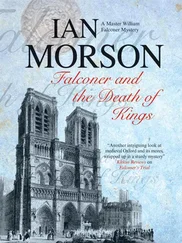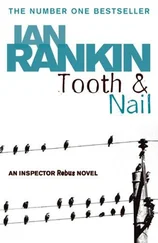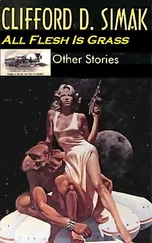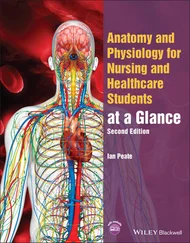Domesday Book includes a remarkably comprehensive survey of the land initiated by King William to ensure accurate assessment and punctual payment of tax. The prosperity of each manor depended upon the amount of land which could be ploughed; in essence, upon the strength of its oxen. Plough-teams were in their turn dependent upon an adequate supply of meadow hay for the winter and so large fertile meadows were the key to the farming economy of those days. This is seen in the relative value per acre of meadow land compared with arable, the former often being worth four times as much as the latter. The value of enclosed pasture was usually less than that of meadow land, while the common pasture land in many instances surrounded the village and gradually merged into scrub and woodland which served as a line of demarcation between neighbouring villages. The scarcity of good pasture is a constant theme of all manorial documents of the period.
Reclamation was continued until around A.D. 1500. The twelfth and thirteenth centuries were the period of greatest colonising activity in England, but this colonisation drive was largely over by about A.D. 1300. Pressure of population seems to have kept peasant demand for land at a high level up to the Black Death in A.D. 1349 although there was considerable contraction of the arable, and hence an increase in grassland, on many estates before A.D. 1300 or very soon afterwards. The Black Death resulted in the death of large numbers of labourers and hence wages rose and the landlords were unable to get their fields cultivated and in spite of legislative measures to resolve the problem a good deal of land simply reverted to grass. This contraction of the arable acreage continued through the late fourteenth century and the first half of the fifteenth. With the break-up of the manorial system a gradual consolidation of holdings took place mainly by exchange. Then too, the trend from a two field system of farming—one field under crop while one lay fallow—towards a three-course system of two fields under crop and one fallow became evident. Ultimately this system gave way to the four course system whereby grass appeared in the open fields which had hitherto been exclusively arable.
The Tudor period was marked by a spate of writings from farmers and historians, and such names as Fitzherbert, Tusser, Leland, Camden and Morden are an essential part of agricultural history. From them a clear picture of the husbandry of the time is obtained and it is quite evident that farmers were becoming very concerned about grass. The meadows of Leicestershire, Northamptonshire, Devon and Somerset brought forth ecstatic praise and it is significant that by A.D. 1600 graziers were obviously men of substance, and wealthy classes of butchers and tanners were arising. The records of the period abound in such cases as the Earl of Derby, whose household in 1590 consumed 56 oxen and 535 sheep, while that of Sir William Fairfax in Yorkshire consumed 49 oxen and 150 sheep, and the household of the Bishop of Aberdeen consumed 48 oxen, 160 sheep, and 17 pigs. Fresh meat in winter was for the wealthy only, for the problem of feeding cattle and sheep on a large scale during the winter months still remained to be solved; the poor, when they had meat in winter, had to make do with salted. England lagged behind the times on this problem, for the value of turnips for cattle during the winter months was already appreciated in the Low Countries.
Wheat as an economic crop offers many attractions to farmers with suitable land and many of the enclosed pastures which had carried cattle and sheep for many years and had as a result increased appreciably in fertility were ploughed, and good yields were obtained which were markedly better than the medieval yield from the open fields, which was recorded as being a meagre 10 bushels per acre. A statute of 1597 had given official recognition to the fact that worn-out arable land regained its fertility when it was laid down to pasture and devoted to grazing stock for a number of years.
We do not know exactly when grass and clover became regarded as a crop and part of a recognised rotation. Richard Weston, a refugee from the Civil War, brought back from Holland a bag of red clover seed when he returned to England. The Spaniards had initiated the Dutch into the growing of red clover ( Trifolium pratense ) a century before and it was usually sown as a pure crop in the arable rotation. In 1653, Andrew Tarranton wrote The Great Improvement of Lands by Clover and, following much of the advice of Weston and Blyth, gave practical demonstrations of its value for stock feed, either when grazed or made into hay. He also managed to convey something of the fertility-restoring powers of clover and the immense increase in the stock-carrying capacity of clover pastures compared with ordinary grass. He instanced the need for careful control of the grazing to avoid the distressing trouble of “bloat” or “hoven” in which affected animals became “blown up” due to an accumulation of gas in the stomach resulting from failure of the mechanism which normally enables relief to be secured by belching. The trouble usually occurs when animals are suddenly introduced to young rich herbage and unfortunately it may prove fatal within an hour or so. (It is interesting to record that some three hundred years later we have not yet found a wholly reliable remedy.) Finally, he encouraged other farmers to visit him and see his ideas put into practice, and to-day we are broadly speaking still following the technique which he practised.
Progress was slow and more than a hundred years elapsed before the first stages in ley farming were generally adopted. The Society for the Encouragement of the Arts, Manufactures and Commerce did much to encourage land improvement and indeed in 1763 imported the seed of cocksfoot ( Dactylis glomerata ) from Virginia and also offered awards for the best herbage seed crops grown in this country. Benjamin Stillingfleet, in his Calendar of Flora 1762, invented English (as opposed to Latin) names for such species as had not already acquired them. Unfortunately, he included sweet vernal ( Anthoxanthum odoratum ) and other useless grasses amongst those recommended as valuable for agricultural purposes. This error was still unnoted 150 years later when excellent samples of this weed were offered for sale as a useful “bottom grass” by the agricultural merchants of the day.
The saving of good seed each year has been stressed by agricultural writers from earliest times. In the eighteenth century Coke of Norfolk and the Duke of Bedford employed children to go into the fields and hedgerows and collect the seed heads of different grasses when they were ripe, in order to have available a store of seed for sowing the following year.
During the latter half of the eighteenth century, agricultural progress was rapid. Tillage methods underwent revolutionary changes, substantial sums of money were invested in farm implements and machinery, in drainage and buildings, and every effort was made to improve both crops and livestock. Agricultural Societies were established all over the country and many of these are still in existence.
After the Napoleonic wars agriculture went into decline. The Board of Agriculture was dissolved in 1822.
When the virgin and fertile lands of the New World came into full production, causing a fall in world grain prices, the British farmer had to face a very real challenge. United Kingdom agriculture turned to dairy farming and animal husbandry generally. A good deal of land was allowed to revert to grass, buildings were not maintained, drainage was neglected, and sheep and cattle as alternative sources of income took the place of corn. By 1874, a vast acreage of arable land had been sown down to grass, no less than 1,688,487 acres between 1877 and 1884. Agriculturists were greatly concerned with the sowing down of land to permanent pasture and so we have J. Caird in his English Agriculture (1850) and M. H. Sutton ( Laying Down Land to Permanent Pasture , 1861), J. Howard ( Laying Down Land to Grass , 1880), C. de L. Faunce-De Laune ( On Laying Land to Permanent Grass , 1882) and William Carruthers ( On Laying Land to Permanent Grass , 1883) all in the Journal of the Royal Agricultural Society, devoting much attention to the problem but indicating at the same time that the tide would turn, that permanent grassland would again be ploughed for cropping and that the crops would be the better if good grassland had been established. The whole matter was summarised very effectively in Robert H. Elliott’s book The Clifton Park System of Farming (1898).
Читать дальше












